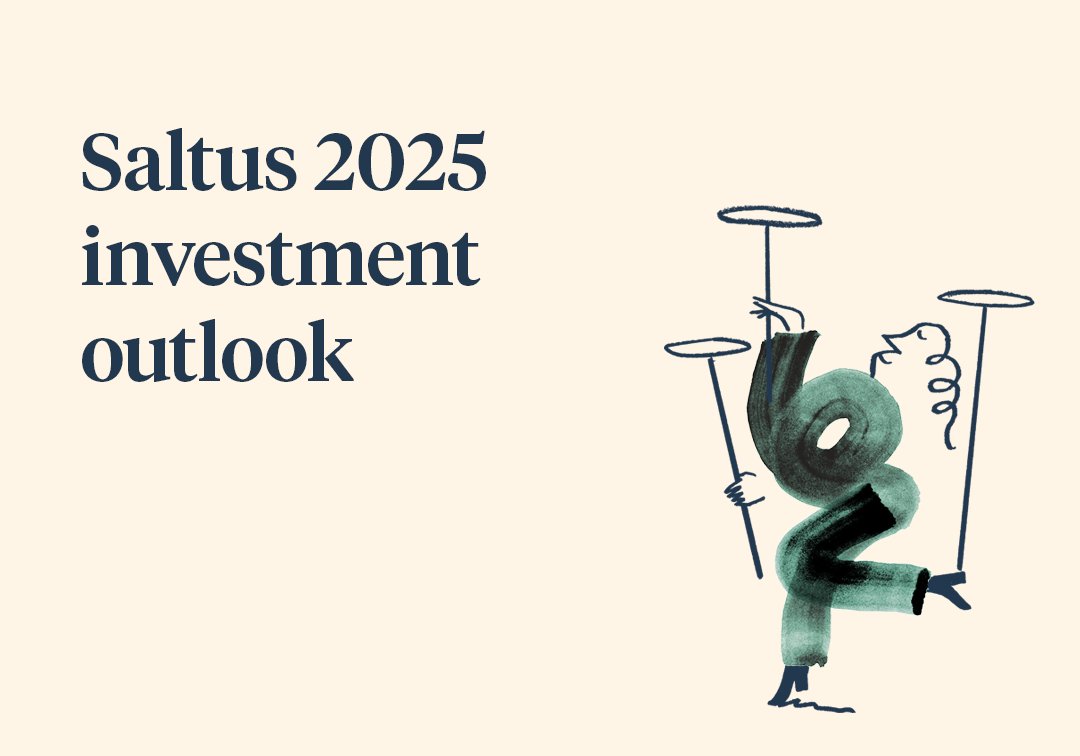Credit Suisse was a financial conglomerate founded over 160 years ago. It was a Systemically Important Financial Institution (SIFI), more commonly described by the words “too big to fail”, but fail it has.
Interest rates have been rising very quickly, and some very large banks have failed. First Silicon Valley Bank, then Signature Bank, and then Credit Suisse. In this article we look at the impact of both rate rises and bank failures, and why we don’t see this as the start of a financial crisis.
What are the impacts of higher interest rates?
There are many impacts but the most important can be summarised as follows:
- The cost of borrowing increases, so people spend more servicing their debts and less on goods and services, so the prices of those things rise more slowly, which means a lower rate of inflation
- Savings accounts have higher yields, encouraging people to save more and spend less which, like the above, also reduces the rate of inflation
- The value of investments can change. Bond values typically fall when interest rates rise, (e.g. last year, when bonds had one of their worst years on record). The impact on equities isn’t as direct as with bonds, but higher borrowing costs and lower consumer spending would make it more difficult for companies to make money. Additionally, some investors use interest rates as a method to value stocks, and higher interest rates imply lower stock values, especially for companies with high expected growth rates (growth stocks underperformed cheaper stocks last year by about 20%)
- Higher interest rates make a currency more desirable so, barring any other changes, higher interest rates would be expected to cause a currency to strengthen.
Watch our webinar
Protecting your money: how we manage portfolios during market turmoilIn conversation with Tom Merchant and Charles Ambler


The combination of these factors can be too much for some. Interest rate rises can cause things to break, some companies can go bust, some people can lose jobs, and some can default on loans, leading to losses for lenders.
Interest rate sensitivities
Some industries are traditionally very sensitive to changes in interest rates. For example, the automobile and construction industries typically have a lot of debt, so small increases in the cost of the debt can quickly and significantly lower their profitability. Other sectors feel mainly second round effects via less spending on say furniture and holidays, these impacts can take longer to come through, and so these sectors are less sensitive to rate rises.
Some companies and people have loans that are on fixed rates of interest. Some have lots of cash they draw down to pay higher borrowing costs, and so can maintain their spending on goods and services, despite the higher interest rates. Some don’t have any loans at all. These ones aren’t that sensitive to rate changes.
Because economic participants have different sensitivities to changes in interest rates, it can be difficult to predict what the impact of rate increases will be.
Is it different this time?
One of the interesting differences between this current cycle compared to previous ones is that traditional interest rate sensitivities have changed, because of the following Covid-related impacts:
- Savvy borrowers locked in lower borrowing rates: during the pandemic many companies and people refinanced their debts, fixing them for much longer periods, reducing their interest rate sensitivity
- Cash savings were high and are being drawn down: many people and companies came out of lockdown with substantial cash savings from money not spent, or given to them in the form of support payments. This has allowed many to continue spending on goods and services, whilst also spending more on servicing their debts
- Changing spending patterns has been a boost: even if many have been spending more on borrowing and less on goods and services, on aggregate the spending has changed from people buying hot tubs, sofas, and yoga mats during lockdown, to spending on things like going for a meal with friends, which is much more stimulative for economic output. According to Macro Strategy Partnership, on average, US$1 spent at a restaurant employs 6.5x as many people as in-app purchase, and 2.1x as many people as does buying white goods or furniture
- A backlog of orders propping up activity: the pandemic led to significant supply constraints. Many sectors saw orders piling up, including those in the construction and automotive industries. These orders are still being worked through in many areas, maintaining activity in traditionally rate sensitive areas, for now at least.
These have allowed economic activity, jobs numbers and inflation to remain high despite materially higher interest rates.
This change in interest rate sensitivity can only be temporary, because cash savings can’t be spent forever. They are being burnt at a significant pace, for example an estimated US$1 trillion (4% of GDP) in the US (according to Macro Strategy Partnership), and the backlog in orders can only last so long. It’s possible then that the negative impact of higher interest rates is being stored up and might hit a bit harder when it finally comes through.
This makes the life of central bankers more difficult, and helps explain record US retail sales and jobs numbers recently, despite interest rates being 10x higher now than they were about a year ago (going from around 0.5% to 5% in the US, and 0.1% to 4% in the UK).
Do you need help managing your investments?
Our team can recommend an investment strategy to meet your financial objectives and give you peace of mind that your investments are in good hands. Get in touch to discuss how we can help you.

Why are some banks failing?
Banks are sensitive to changes in interest rates. When interest rates are high, in theory, they can make more money because they can lend money at higher rates. But in practice it’s much more complicated than that.
Many banks are sensitive to the shape of interest rates. You might be asking how on earth interest rates have a shape. Well, when interest is paid or received, it’s done for a period of time. Normally, the longer the loan the higher the interest rate to compensate for greater risk of default and a lack of ability to do something else with the money. If you make a chart of interest rates versus time you normally get a nice upward sloping line. Shorter loans having lower rates and longer loans having higher rates. This is called the yield curve.
Banks receive deposits from customers and have to pay them interest. Banks can normally make money from this process by pooling deposits and lending that money to others at a higher interest rate than what they pay the depositor, and the bank keeps the difference between the interest they receive on the loans they have made versus the interest they pay on the deposits. In an attempt to maximise returns, a bank could decide lend the money out for many years, because normally longer term loans have higher interest rates.
However, the yield curve recently reached its deepest inversion since 1981. This means that the interest rate on short term loans is much larger than the interest rate on longer term loans. As an example, you can get 4.19% lending money to the US government for 1 year but 3.29% per annum for 10 years. This dynamic makes it much more difficult for banks to make money.
But, it gets worse. Some banks effectively bet on interest rates staying low for a long time by taking depositor money and buying long dated government bonds. The issue with this strategy is that long dated government bonds are extremely sensitive to changes in central bank interest rates. When central bank rates rise, long dated government bonds normally fall in value (which is one of the reasons government bonds had one of their worst years on record last year).
This brings us to Silicon Valley Bank (“SVB”), which was the 16th largest bank in the US, and a leading bank for technology and life sciences companies. Its customers were very large and well-informed when compared to the average depositor in the US. As central banks increased interest rates, SVB had to increase the rate they pay their depositors very quickly, because their well-informed customers would quickly find another bank if they didn’t (this was less of an issue for other banks e.g. JP Morgan, whose customers are more ‘Average Joe’ than ‘Tech Bro’). So SVB’s deposits were unusually sensitive to interest rates – small increases in interest rates would result in significant increases in their expenditure (the interest they paid their tech companies for their deposits). This was compounded by their decision to take a lot of those deposits and invest them in long-dated government bonds, which are also very sensitive to interest rates – small increases in interest rates can cause huge losses in the value of these assets. Which is exactly what happened. Once their depositors got wind of huge losses in their bank’s portfolio they didn’t hang around, they withdrew money at such a rate that the bank couldn’t cope. These events can now happen more suddenly than before, such is the speed of 1) information about potential issues being broadcast and discussed instantly, and 2) bank transfers being possible with a few clicks of a mouse or taps on a screen.
Credit Suisse was another casualty. It was involved in a string of scandals over the last decade or so. From corporate espionage (leading to CEO Thiam stepping down), to being found guilty of laundering cash from the cocaine trade, losing billions on both the collapse of Greensill Capital and then the Family Office Archegos. Like SVB, Credit Suisse also faced issues with losses on government bonds and similar instruments, which was the final straw, and both clients and investors lost faith. Credit Suisse was one of 30 banks officially determined as being of systemic importance, and the Swiss couldn’t let it collapse completely, so they supported the purchase via competitor UBS – itself formed of a merger between Union Bank of Switzerland and Swiss Bank Corp 25 years ago. This essentially leaves Switzerland with one massive universal bank.
Why we don’t see this as the start of a financial crisis
Huge banks don’t disappear without leaving a mark but, due to lessons learnt from the previous banking crisis, the damage is generally expected to be limited.
The Great Financial Crisis of 2008/9 led to many positive reforms. Banks are significantly better capitalised and regulated than they were, especially the large ones. Many now have ring fenced assets separating high risk units from those handling deposits.
Central banks learnt the importance of swift, decisive action to stem contagion such as the guaranteeing of deposits (to limit the chance of depositors all trying to take their money out) and arranging short term funding lines. The US and Swiss central banks took weeks to provide such measures to their banks this year, in the previous crisis they took several months.
The Federal Reserve’s new Bank Term Funding Program (“BTFP”) is essentially another round of Quantitative Easing (“QE”), similar to what we saw after the prior banking crisis, and during the Covid pandemic. In the Fed’s own words:
“The Bank Term Funding Program (BTFP) was created to support American businesses and households by making additional funding available to eligible depository institutions to help assure banks have the ability to meet the needs of all their depositors.” [1]
The program lets US federally insured depository institutions (such as banks, savings associations and credit unions) borrow from the Federal Reserve for up to one year against high quality assets such as government bonds.
This has been done to stabilise the banking system and acts to safeguard many deposits and loans.
Policymakers will do everything they can to keep the banking system safe. In fact, one of our research providers, CrossBorderCapital, suggests the Federal Reserve’s assets could jump by a whopping US$4-5 trillion, or by more than 50% of its current size. Whilst this may create other issues, it highlights how seriously they are taking the threat, and their desire to stop it from becoming another financial crisis.
Do you need help managing your investments?
Our team can recommend an investment strategy to meet your financial objectives and give you peace of mind that your investments are in good hands. Get in touch to discuss how we can help you.

What will the impacts be?
Many have been concerned about their deposits, and some have moved them to larger banks, those deemed too big to fail, and hence with a greater perception of safety. This has impacted some smaller banks in terms of their solvency, liquidity and profitability but, because of the policy response after the SVB collapse, this may be short lived.
However, banks will be inclined to reduce risk, and therefore lending activities. So companies, investment funds, and people will find it more difficult to fund projects and spending. This will act as a drag on economic growth, and therefore also reduce inflation.
Interestingly, the reduced lending activity should act a bit like increased interest rates. Both reduce liquidity and activity in the economy, and therefore lower inflation. Or as Jay Powell (the Chairman of the Federal Reserve) said himself:
“We’re looking at what’s happening among the banks and asking is there going to be some tightening in credit conditions and we’re thinking about that as effectively doing the same thing that rate hikes do, so in a way that substitutes for rate hikes”.
Prior to the bank failures, the principal concerns were that the economy and labour market were too strong, so inflation was going to be difficult to lower towards the central bank target 2% rates, and central banks were expected to keep increasing interest rates.
Because of the issues within banks, and the resulting tighter lending conditions, interest rates are expected to climb a little bit lower than was expected before the issues became widely known. In fact, many now expect interest rates to begin lowering by the end of the year which, all else being equal, would be a boost for many stocks and bonds.
Were Saltus portfolios affected by the banking issues?
Yes, but direct exposure was very low.
We had no direct active exposure to Credit Suisse within Saltus portfolios and we avoided the worst of the US regional banking sector sell-off. Our portfolios did feel the wider shock of global equity markets falling. However, in performance terms, we remain positive both in absolute terms and relative to our benchmarks for the year so far.
We did have a very small exposure to Credit Suisse bonds via one of our active managers but the portfolio impact of this is extremely small. We have for some time had much lower exposure to these sorts of bonds compared to most of our competitors.
Looking ahead
“We never know where we’re going, but we sure as heck ought to know where we are” Howard Marks, billionaire investor and founder of Oaktree Capital.
Like Howard Marks, we don’t look to forecast economic events, however, we do try and understand current conditions. Economic growth is falling but is holding up better than many expected. Unemployment rates are generally very low. Interest rate rises have affected some e.g. some banks but, because of the lessons learnt from the previous banking crisis, this is currently an issue for those banks and not a systemic issue, but banks are less inclined to lend, and interest rates are rising more slowly. There are various support mechanisms in place to protect the banking sector and depositors, and liquidity has increased significantly.
Asset prices are generally lower now than they have been for some time, and many remain attractive on a long-term view. Where there is volatility there is often opportunity, and we think Howard Marks would agree. His firm believe is that there is an “exceptional” opportunity to fill the void left by lower Wall Street lending, and they’re raising $10 billion for a new fund to help finance private equity activity.
We have several interesting investment ideas we are watching closely, and will put client money to work when we think the time is right.
[1] Federal Reserve website
Do you need help managing your investments?
Our team can recommend an investment strategy to meet your financial objectives and give you peace of mind that your investments are in good hands. Get in touch to discuss how we can help you.

Article sources
Editorial policy
All authors have considerable industry expertise and specific knowledge on any given topic. All pieces are reviewed by an additional qualified financial specialist to ensure objectivity and accuracy to the best of our ability. All reviewer’s qualifications are from leading industry bodies. Where possible we use primary sources to support our work. These can include white papers, government sources and data, original reports and interviews or articles from other industry experts. We also reference research from other reputable financial planning and investment management firms where appropriate.
The views expressed in this article are those of the Saltus Asset Management team. These typically relate to the core Saltus portfolios. We aim to implement our views across all Saltus strategies, but we must work within each portfolio’s specific objectives and restrictions. This means our views can be implemented more comprehensively in some mandates than others. If your funds are not within a Saltus portfolio and you would like more information, please get in touch with your adviser. Saltus Asset Management is a trading name of Saltus Partners LLP which is authorised and regulated by the Financial Conduct Authority. Information is correct to the best of our understanding as at the date of publication. Nothing within this content is intended as, or can be relied upon, as financial advice. Capital is at risk. You may get back less than you invested. Tax rules may change and the value of tax reliefs depends on your individual circumstances.
About Saltus?
Find out more about our award-winning wealth management services…
Winner
Investment Performance: Cautious Portfolios
Winner
Top 100 Fund Selectors 2024
Winner
Best Places to Work 2024
Winner
Best Financial Advisers to Work For
£8bn+
assets under advice
20
years working with clients
350+
employees
97%
client retention rate







